
Home energy technology company Enphase (NASDAQ:ENPH) announced better-than-expected revenue in Q3 CY2025, with sales up 7.8% year on year to $410.4 million. On the other hand, next quarter’s revenue guidance of $330 million was less impressive, coming in 11.9% below analysts’ estimates. Its non-GAAP profit of $0.90 per share was 37.2% above analysts’ consensus estimates.
Is now the time to buy Enphase? Find out by accessing our full research report, it’s free for active Edge members.
Enphase (ENPH) Q3 CY2025 Highlights:
- Revenue: $410.4 million vs analyst estimates of $366.4 million (7.8% year-on-year growth, 12% beat)
- Adjusted EPS: $0.90 vs analyst estimates of $0.66 (37.2% beat)
- Adjusted EBITDA: $137.8 million vs analyst estimates of $102 million (33.6% margin, 35.2% beat)
- Revenue Guidance for Q4 CY2025 is $330 million at the midpoint, below analyst estimates of $374.4 million
- Operating Margin: 16.1%, up from 13.1% in the same quarter last year
- Free Cash Flow Margin: 1.4%, down from 42.4% in the same quarter last year
- Sales Volumes rose 2.2% year on year (-55.7% in the same quarter last year)
- Market Capitalization: $4.81 billion
Company Overview
The first company to successfully commercialize the solar micro-inverter, Enphase (NASDAQ:ENPH) manufactures software-driven home energy products.
Revenue Growth
Reviewing a company’s long-term sales performance reveals insights into its quality. Any business can put up a good quarter or two, but the best consistently grow over the long haul. Over the last five years, Enphase grew its sales at an incredible 16% compounded annual growth rate. Its growth beat the average industrials company and shows its offerings resonate with customers.
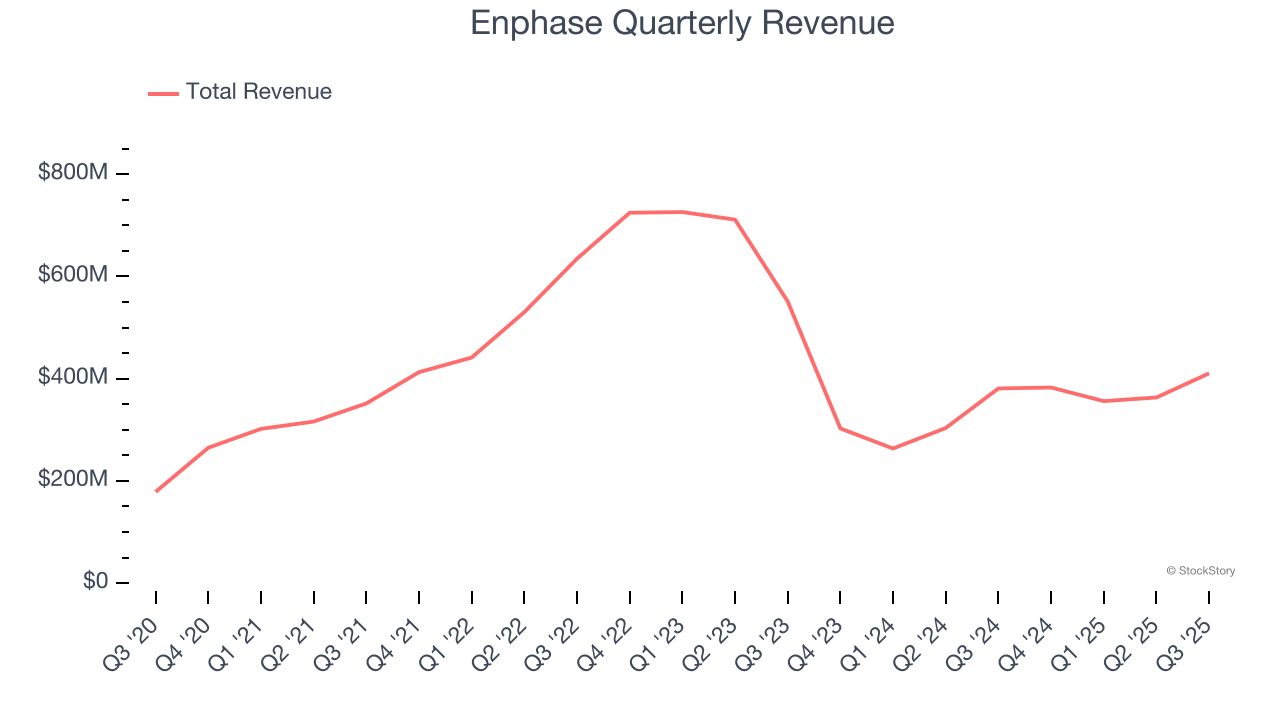
We at StockStory place the most emphasis on long-term growth, but within industrials, a half-decade historical view may miss cycles, industry trends, or a company capitalizing on catalysts such as a new contract win or a successful product line. Enphase’s recent performance marks a sharp pivot from its five-year trend as its revenue has shown annualized declines of 25.3% over the last two years. Enphase isn’t alone in its struggles as the Renewable Energy industry experienced a cyclical downturn, with many similar businesses observing lower sales at this time. 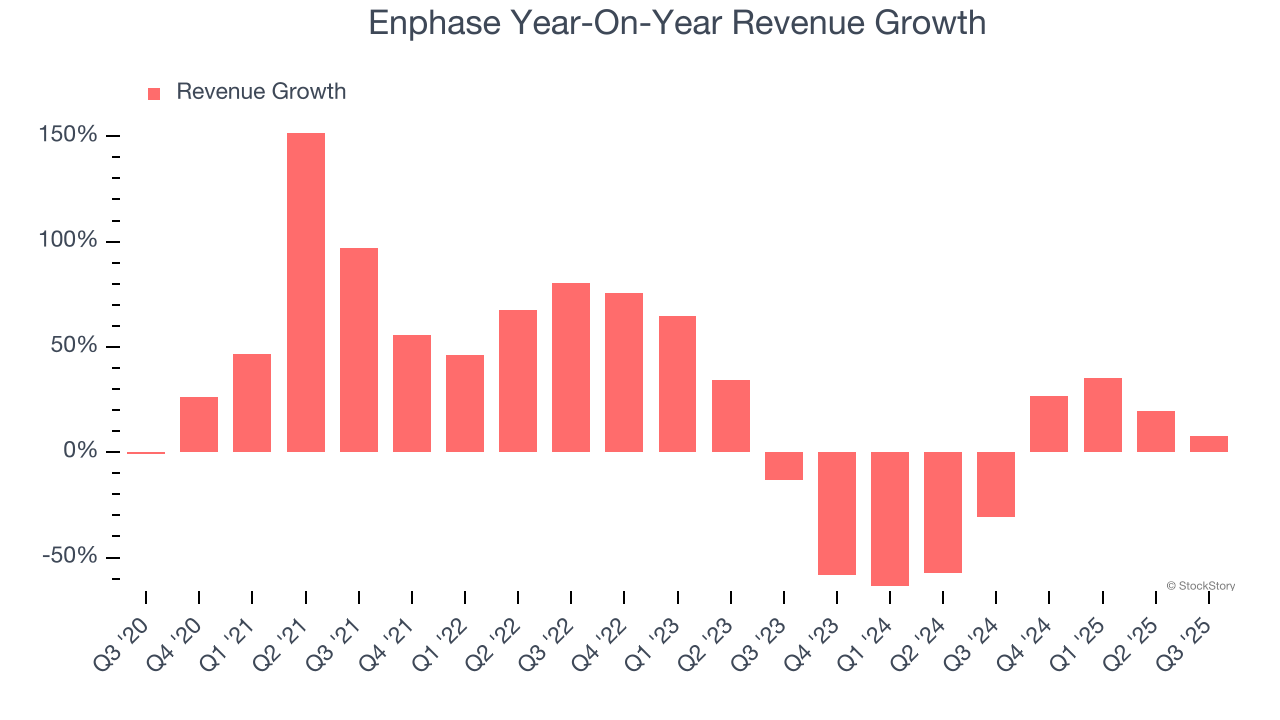
We can dig further into the company’s revenue dynamics by analyzing its number of units sold, which reached 1.77 million in the latest quarter. Over the last two years, Enphase’s units sold averaged 27.4% year-on-year declines. Because this number is lower than its revenue growth, we can see the company benefited from price increases. 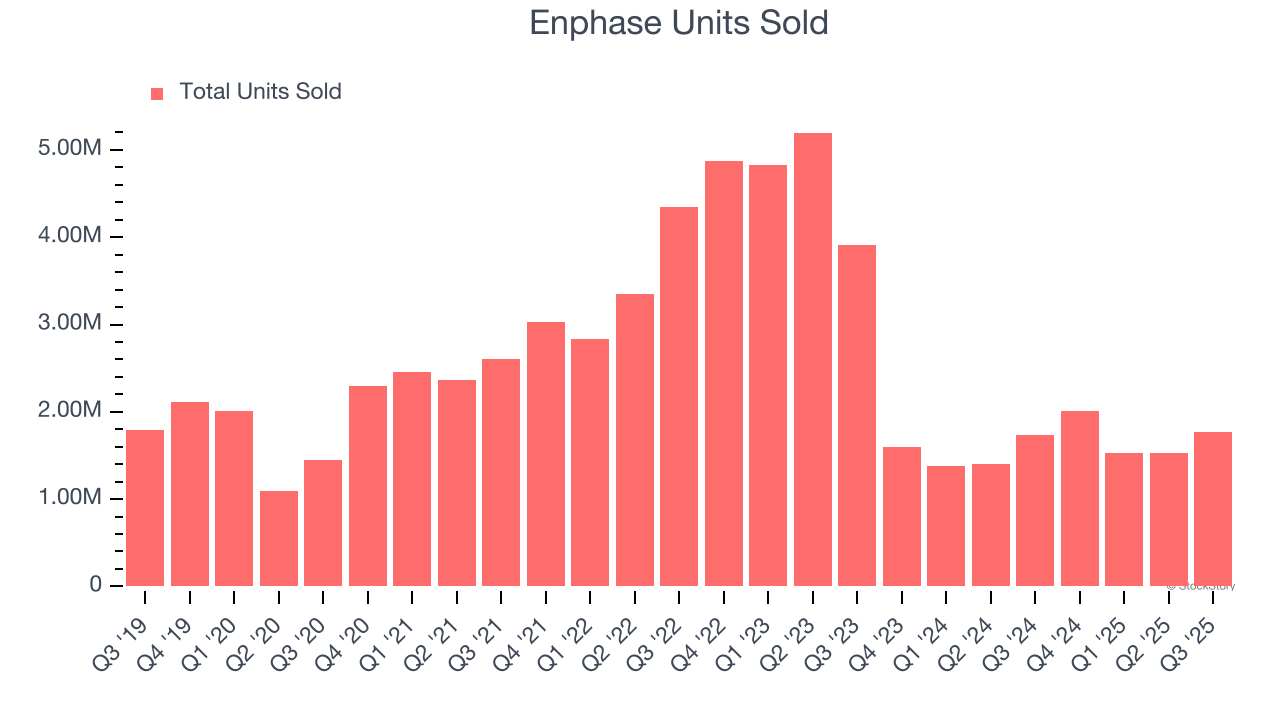
This quarter, Enphase reported year-on-year revenue growth of 7.8%, and its $410.4 million of revenue exceeded Wall Street’s estimates by 12%. Company management is currently guiding for a 13.8% year-on-year decline in sales next quarter.
Looking further ahead, sell-side analysts expect revenue to decline by 12.4% over the next 12 months. Although this projection is better than its two-year trend, it’s hard to get excited about a company that is struggling with demand.
Software is eating the world and there is virtually no industry left that has been untouched by it. That drives increasing demand for tools helping software developers do their jobs, whether it be monitoring critical cloud infrastructure, integrating audio and video functionality, or ensuring smooth content streaming. Click here to access a free report on our 3 favorite stocks to play this generational megatrend.
Operating Margin
Operating margin is one of the best measures of profitability because it tells us how much money a company takes home after procuring and manufacturing its products, marketing and selling those products, and most importantly, keeping them relevant through research and development.
Enphase has been a well-oiled machine over the last five years. It demonstrated elite profitability for an industrials business, boasting an average operating margin of 16.1%. This result isn’t surprising as its high gross margin gives it a favorable starting point.
Looking at the trend in its profitability, Enphase’s operating margin decreased by 6.7 percentage points over the last five years. This raises questions about the company’s expense base because its revenue growth should have given it leverage on its fixed costs, resulting in better economies of scale and profitability.
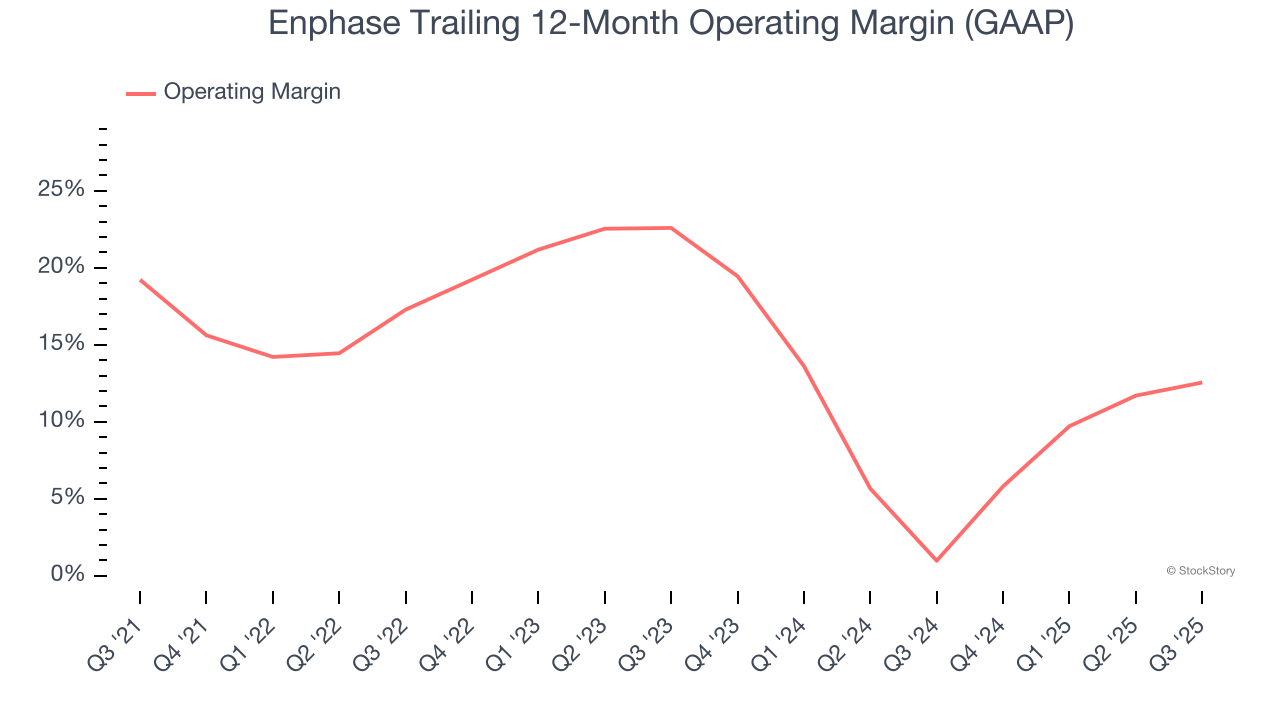
This quarter, Enphase generated an operating margin profit margin of 16.1%, up 3 percentage points year on year. The increase was encouraging, and because its operating margin rose more than its gross margin, we can infer it was more efficient with expenses such as marketing, R&D, and administrative overhead.
Earnings Per Share
Revenue trends explain a company’s historical growth, but the long-term change in earnings per share (EPS) points to the profitability of that growth – for example, a company could inflate its sales through excessive spending on advertising and promotions.
Enphase’s EPS grew at an astounding 20.7% compounded annual growth rate over the last five years, higher than its 16% annualized revenue growth. However, this alone doesn’t tell us much about its business quality because its operating margin didn’t improve.
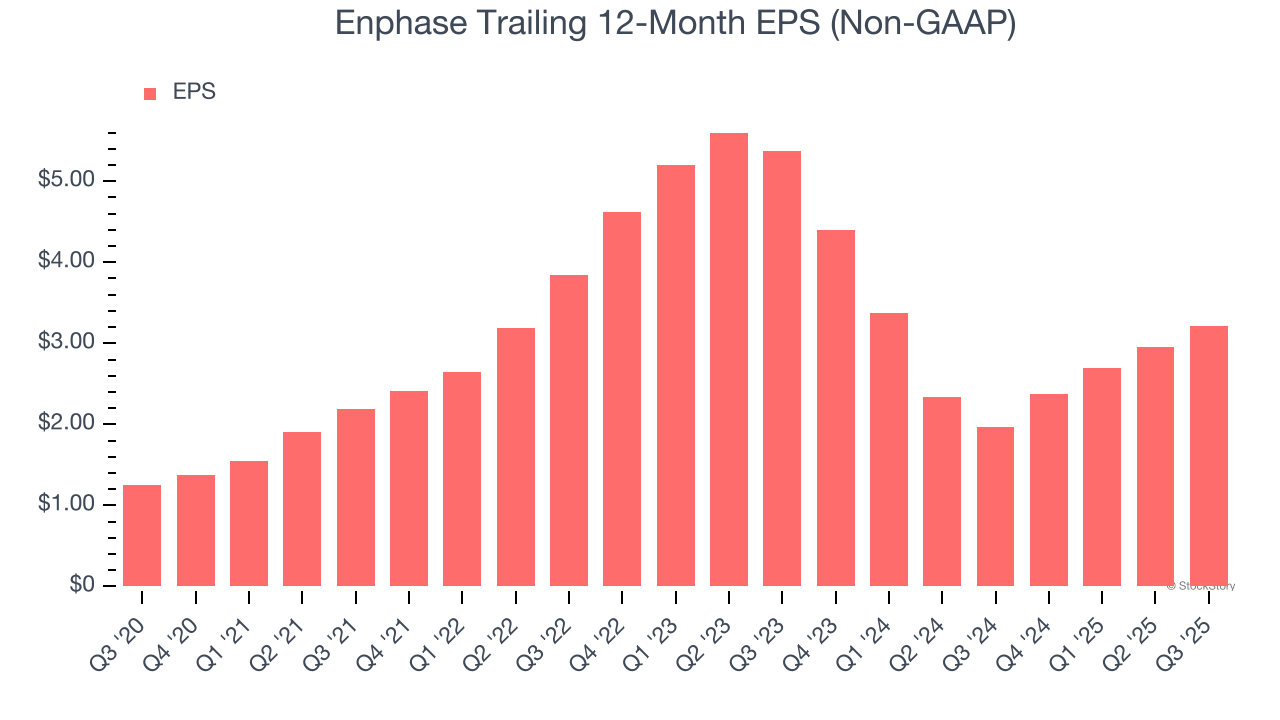
We can take a deeper look into Enphase’s earnings to better understand the drivers of its performance. A five-year view shows that Enphase has repurchased its stock, shrinking its share count by 6.2%. This tells us its EPS outperformed its revenue not because of increased operational efficiency but financial engineering, as buybacks boost per share earnings. 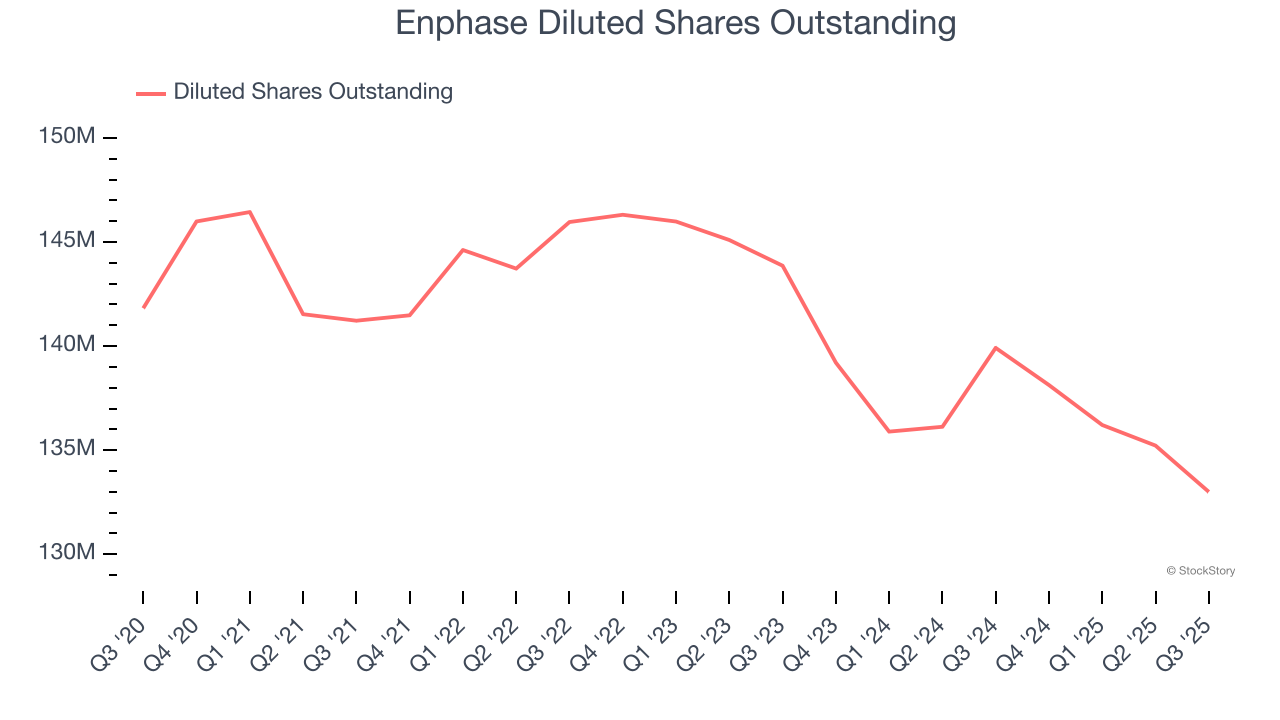
Like with revenue, we analyze EPS over a more recent period because it can provide insight into an emerging theme or development for the business.
For Enphase, its two-year annual EPS declines of 22.7% mark a reversal from its (seemingly) healthy five-year trend. We hope Enphase can return to earnings growth in the future.
In Q3, Enphase reported adjusted EPS of $0.90, up from $0.65 in the same quarter last year. This print easily cleared analysts’ estimates, and shareholders should be content with the results. Over the next 12 months, Wall Street expects Enphase’s full-year EPS of $3.21 to shrink by 23.3%.
Key Takeaways from Enphase’s Q3 Results
It was great to see Enphase beat analysts’ revenue, EPS, and EBITDA expectations by a wide margin this quarter. On the other hand, its revenue guidance for next quarter missed by a long shot. The market seemed to be hoping for more, and the stock traded down 8.1% to $33.79 immediately following the results.
So do we think Enphase is an attractive buy at the current price? We think that the latest quarter is only one piece of the longer-term business quality puzzle. Quality, when combined with valuation, can help determine if the stock is a buy. We cover that in our actionable full research report which you can read here, it’s free for active Edge members.
